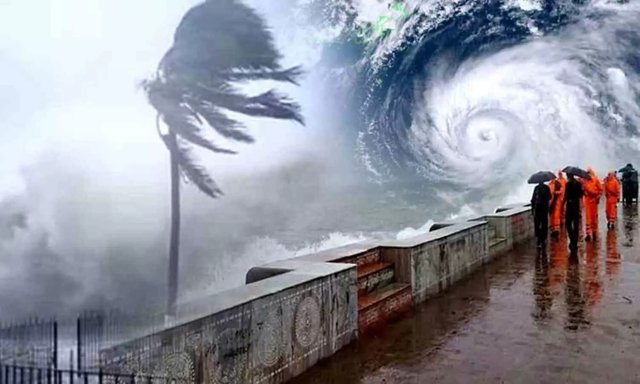
Introduction:
Cyclone Biparjoy, a name that resonates with both anticipation and apprehension, recently made its presence known in the coastal regions. Cyclones are natural disasters that bring destructive winds, heavy rainfall, storm surges, and immense challenges to the affected areas. Biparjoy, with its unique characteristics, serves as a reminder of the need for robust disaster preparedness, effective response systems, and resilient communities.
Understanding Cyclone Biparjoy:
Cyclone Biparjoy, like any other cyclone, derives its power from warm ocean waters and atmospheric conditions conducive to its formation. While each cyclone has its distinct attributes, Biparjoy was notable for its intensification and its trajectory towards densely populated coastal areas. The cyclone's impact was amplified by factors such as population density, inadequate infrastructure, and the vulnerability of communities living in its path.
Preparedness and Early Warning Systems:
Effective disaster preparedness plays a crucial role in mitigating the impact of cyclones like Biparjoy. Governments, along with local authorities, must invest in robust early warning systems that provide timely and accurate information to vulnerable communities. Meteorological agencies and disaster management authorities play a pivotal role in monitoring and forecasting cyclones, ensuring that communities have sufficient time to evacuate, secure their properties, and take necessary precautions.
Community Resilience and Evacuation:
Community resilience is essential when facing the wrath of a cyclone. Local communities should be educated and empowered to understand the risks associated with cyclones, enabling them to make informed decisions during evacuation procedures. Governments and organizations should invest in building infrastructure that supports evacuation, including well-maintained shelters and transportation systems. Additionally, community-level training programs can equip individuals with the necessary skills to respond effectively during and after the cyclone, fostering a sense of resilience and self-sufficiency.
Infrastructure Development and Risk Reduction:
Cyclone-prone regions must invest in resilient infrastructure and risk reduction measures to withstand the impact of severe weather events like Biparjoy. This includes reinforcing critical structures such as schools, hospitals, and emergency centers to ensure they can withstand high winds and storm surges. Furthermore, coastal areas can benefit from nature-based solutions such as mangrove restoration and coastal vegetation, which act as natural barriers against storm surges and erosion.
Post-Cyclone Relief and Rehabilitation:
The aftermath of a cyclone demands comprehensive relief and rehabilitation efforts to restore normalcy in affected areas. Governments, NGOs, and international organizations must collaborate to provide immediate assistance in terms of food, water, medical aid, and shelter. Furthermore, efforts should focus on long-term recovery and rebuilding, ensuring sustainable livelihoods, and addressing the social and psychological needs of the affected communities.
Conclusion:
Cyclone Biparjoy serves as a potent reminder of the unpredictable and destructive forces of nature. While it is impossible to prevent cyclones entirely, proactive measures in disaster preparedness, community resilience, and infrastructure development can significantly minimize their impact. By investing in early warning systems, robust evacuation procedures, and sustainable recovery plans, we can navigate the path of resilience and emerge stronger from the aftermath of cyclones like Biparjoy. With collective efforts from governments, communities, and organizations, we can build a safer and more resilient future, prepared to face the challenges that nature presents.